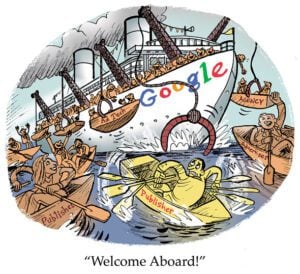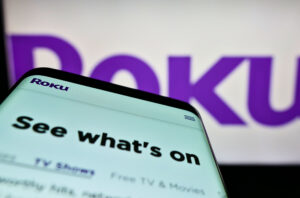Comscore now has something Nielsen doesn’t: local TV measurement accreditation.
On Wednesday, Comscore announced that it secured Media Rating Council accreditation for both national and local TV ratings. Its ratings are based on viewing data from set-top boxes, automatic content recognition tech and panel data.
Nielsen, by comparison, regained accreditation for national ratings in April after losing it for national and local in 2021 as a result of undercounting audiences during the pandemic. But the incumbent has yet to earn back accreditation for local measurement because it’s a separate product that still hasn’t made it through reaccreditation audits.
Comscore hopes its new status relays a message to the industry that “there is a clear alternative” to today’s go-to TV ad currency, CEO Jon Carpenter told AdExchanger.
But take that message with a grain of salt, since Nielsen is forestalling some alt currency adoption this year by holding onto its average commercial minute ratings (C3 and C7) until next year. Which means publishers and advertisers are in less of a hurry to ditch the panels they’ve used for decades.
Still, Comscore has reasons to be optimistic about its chances of tipping the scales.
A new era
Comscore’s bragging rights come partly from how difficult it is to gain MRC accreditation.
The company has been undergoing MRC audits for this rating since 2021, Carpenter said. And the MRC audits are “incredibly rigorous,” he added.
That rigor explains how the MRC maintains its significance despite recent skepticism regarding its necessity now that the comparatively new TV joint industry committee (JIC) has its own currency certification process.
The JIC is complementary to the MRC, but is no replacement, according to Carpenter. (Comscore has conditional certification from the JIC, as does iSpot and VideoAmp. Nielsen refuses to join the JIC.)
Still, the advantage in having the MRC’s stamp of approval won’t be enough to upset the dynamic with Nielsen. Comscore must also prove that its product has something Nielsen’s doesn’t.
Cream of the currency crop
Specifically, Comscore considers the inclusion of both national and local ratings in a single measurement product to be a competitive edge over its strongest rival.
Using one consistent methodology for national and local ratings is more suitable for fragmented TV viewing across platforms, Carpenter said. Nielsen, on the other hand, keeps its national and local measurement products separate because they involve different types of data and have different clientele.
For example, ACR tech can’t always identify local TV stations because it relies on a content library of titles it’s seen before. The local news can easily be discounted because ACR tech doesn’t recognize it and, therefore, can’t attribute it to a media owner. That gap is why Nielsen uses additional set-top box data for its local ratings, including data from Charter that it doesn’t use for national measurement.
And while the new Nielsen ONE product (currently available but not yet in final form) measures video consumption across linear, streaming, mobile and desktop channels, it isn’t designed for local TV.
“Nielsen ONE is a national product” because the data that feeds it is national TV data, Nielsen told AdExchanger over the summer.
But as publishers and agencies strive to streamline operations by combining their linear and connected TV ad sales teams, it’s logical to assume they’ll bring national and local sales operations closer together, too.
Having one accredited measurement product that’s truly cross-platform “bodes well for our credibility” in the measurement and currency space, Carpenter said.
Translation: Comscore is eager to brandish its badge of accreditation during upfront presentations in May.


















